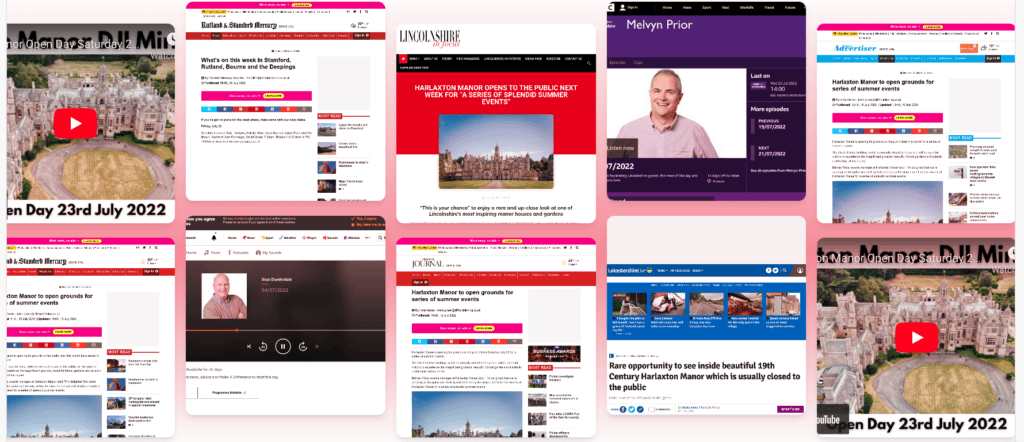I think of PR as a kind of marketing by stealth.
A marketer wants to guide potential consumers, clients or customers toward making a transaction with an organisation. They largely do this by getting people aware of the organisation, its products or services, making them feel positively about it and directing them onto a ‘funnel’ or ‘journey’ which leads them to the end goal.
In that sense – my colleagues and I in PR are the same because, at its core, PR (public relations) is a specialism within marketing that uses specific approaches to achieve that goal.
Where marketing ends and PR begins
There is a lot of crossover between PR and more general marketing, so the lines between the two are a bit blurred but there is a lot of ground that is clearly marked ‘PR’.
Generally speaking, because a marketer has the full range of tools at their disposal, they’d usually opt to use the most straightforward, cost effective options first. This might mean paying for an advertising campaign, sharpening a sales pitch, tidying up a website or improving branding.

Mostly, a marketer would use the direct approach of saying to prospective customers “we’re great, our stuff is great, buy our stuff”. It’s a good approach, and it can work, but sometimes you need to be a bit smarter about things.
One of the biggest problems with this is that people are wary of adverts and, quite rightly, don’t take them at face value: We see relevant adverts all the time, but they very rarely dictate our buying behaviour.
So, instead of directly marketing, a major part of PR is to get other people to do marketing on our behalf. People don’t trust adverts, but they are more likely to trust reputable newspapers, magazines, websites and influencers so instead of saying it ourselves, we get them to say ‘this is great, their stuff is great, buy their stuff’.
Tools of the trade
The simplest but costliest way to do this is to buy what we call an ‘advertorial’, where a publication produces material on behalf of a paying client which looks more or less like their other content. Unfortunately, people are also wary of this – especially since most publications and social media channels now have to identify paid-for or sponsored content.
The better way forward is to be a source of news ourselves; furnishing publishers with ready-made or ready-to-make content that’s ideally suited to their publication or channel. This content would put our client in a positive light, communicate their messages and build brand awareness but our material would have to earn its place so it has to be about content first, client second and it cannot come across as an advert.

By and large, we might do this through securing product reviews, pitching features, columns and interviews, but the real bread and butter of a PR agency is producing press releases. These are basically news articles featuring our client that could be copied, pasted and published or pulled apart and repurposed however a journalist sees fit. We do everything we can to make a journalist’s job as easy as possible so they can report on our client and get their messages across.
Another approach might be to use the news agenda to our advantage; pitching spokespeople as commentators, thought leaders or experts in their particular field to react to news stories or topics of interest. In doing this, we’d hope to build their brand, impress our target audience and portray them in a positive light, getting across some of our key messages while we’re at it.
This might sound a lot more challenging than the direct approach, but it can be tremendously effective because it bypasses that filter which makes people shut out advertisements.
The power or trust
The key thing about PR is credibility. We all expect every company to say their products are the best so whenever we see or hear these bold claims coming from the horse’s mouth, we take it with a pinch of salt – but if someone you trust says the same thing, we’re much more likely to believe them.
Likewise, marketers and business coaches will tell you that the best way of growing a client-base is through referrals; the power of happy customers recommending a business to their friends, colleagues or contacts. PR takes this to the next level, securing recommendations from people with the biggest reach possible.

Despite all the stuff people say about fake news and the mainstream media, people do trust the media. Yes, journalism is under threat and people are getting more wary of how the media can be manipulated by moguls and pressured by politicians, but it remains the case that 34% say they trust UK news in general and a whopping 55% trust the BBC’s coverage (YouGov/RISJ 2022). With some publications attracting audiences in the tens of millions, that’s a huge number of people consuming content they trust so it’s a no-brainer to do what we can to try and get our clients some good media coverage.
More than mass media
Of course, mass media isn’t the only show in town: PRs love all kinds of third party media, whether it’s social media influencers, niche B2B trade magazines or even live cooking demonstrations. We might arrange events, stunts and gimmicks – anything that will get our clients talked about in the right way, by the right people for the right audience.
At Carrington, we also treat search engines as an important target, so improving search visibility so a client can rise up the rankings for relevant search terms is a key part of what we do. This can see us tinkering behind the scenes of websites or adjusting and rewriting web copy and site structure to improve search engine optimisation (SEO).
Depending on our client’s needs, we might also need to communicate with other stakeholders, including staff or investors as well as customers and consumers so we work with them to carefully design and deliver messages for any audience.
We’re also a massive help when things aren’t so rosy, helping clients to respond to public criticism, negative media reports or unfolding crises where good communication is the key to protecting a reputation.
PR is a broad church but it’s a lot of fun and a real creative challenge where thinking outside the box is always encouraged.
Explore our site if you’d like to find out more, and see some of what we’ve done for our clients.



